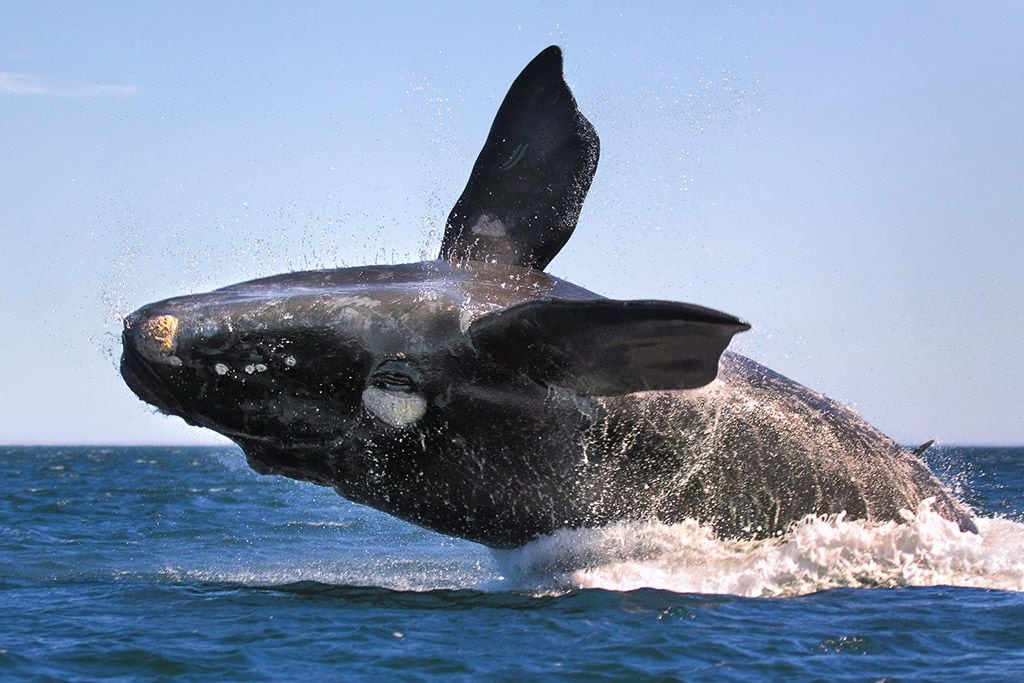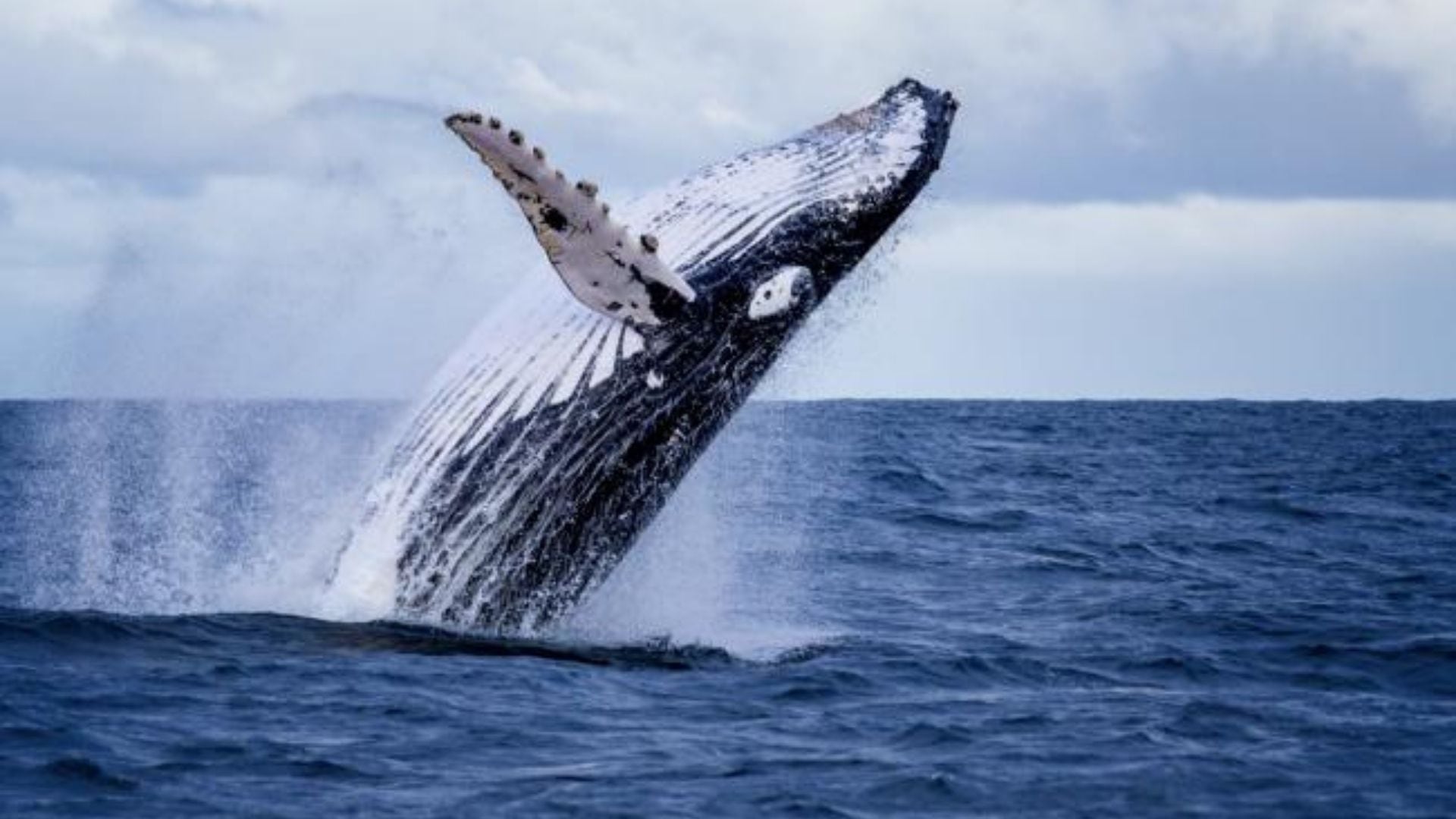
The bristle-like structures that toothless whales feed on, such as humpback and southern frank, keep a chemical record of their feeding patterns. Scientists from the University of New South Wales (UNSW), in Australia, discovered the secrets that hold the jaws of these two specimens and through their beards revealed how these large aquatic mammals adapted to environmental changes over time.
Researchers demonstrated that changes in whale eating habits, dating back almost 60 years, correlate with changes in climate cycles. “The incredible thing is that all this information about dietary and spatial patterns was revealed only with the analysis of the plaques in their mouths,” confirmed Adelaide Dedden, lead author of the study and candidate for the UNSW PhD in Science.
In the study, published in Frontiers in Marine Science, researchers compared environmental data with information obtained from the beards of Pacific and Indian humpback and right whales to detect whether their behaviors reflected climate change over time.
As explained by Tracey Rogers, a professor at UNSW, a marine ecologist and another lead author of the study, they discovered that phenomena such as La Niña, which bring devastating floods, are not good for humpback whales either, as it forces them to migrate along the eastern coast of Australia.

From data obtained from beard samples from museum archives and data published in previous studies, they found that humpback whales that had migrated showed signs of poor nutrition during the La Niña phases, a large-scale climate cycle that determines the availability of food in the Southern Ocean.
Changes in the environment make baleen whales vulnerable, as they are huge in need of large amounts of food. “It is also aggravated by its survival strategy,” said Rogers. They fast during the long periods when they leave their productive feeding grounds to reproduce. That is why they are extremely susceptible to changes in ocean-atmospheric cycles, as these can influence food availability.”
The difficulties of analyzing such a large animal complicates the work in the laboratory, which is why researchers focus on observing smaller tissues that keep a more detailed record of the animal's activity.
In the case of filter-feeding whales, the long, thin keratin plates hanging from their upper jaw, known as barbs, allow them to capture many small prey at once, but they also deposit chemical clues known as stable isotopes that give clues to their eating habits.

“As the beards grow, the biochemical signals from their food are trapped. Like the information on the pages of a book, they don't change over time,” Rogers explained. These signs allowed them to reconstruct the behavior of whales over time: what they ate and the general area in which they were at that time.
Researchers found that “stable isotope variability in humpback beards coincided with changes in climate cycles, implying that whale feeding patterns change with climate-driven resource availability,” Dedden said.
“It is known that the oscillation patterns of the isotopes assimilated along their beards reflect the changes in the physiology of the whale, but we also find links between this isotopic variability and the changes in the environment that occur at that time,” he confirmed.
Humpback whales spend the winter months in warm tropical waters to breed before returning to southern Antarctic waters during the summer to feed. In the midst of this migration to the tropics, they are far from food sources and must depend on their body's reserves and what Australia's chance to survive presents them. “Because they are filter-fed, they rely on large aggregations of krill because they find it energetically expensive to feed,” Dedden said.

Antarctic krill needs sea ice to thrive. After the La Niña phases, other research has found that there is less concentration of sea ice where these whales feed, which means that there is less krill for whales to consume and maintain during their months of migration. “Humpback whales off the east coast of Australia show signs of reduced feeding after the La Niña periods, which means they are potentially struggling to build up the energy reserves needed during the summer,” Dedden said.
“Our colleagues have shown that humpback whales are thinner, a sign that they are experiencing poor feeding conditions, and are more likely to run aground in the years following the La Niña events,” Rogers warned.
La Niña is expected to increase the frequency and intensity of their events, which means that these whales will continue to have problems feeding, which could lead to more stranding in the future. The study found that humpbacks off the west coast of Australia, which feed in the Indian Ocean, showed greater feeding success during La Niña periods. “Humpback whales on the east coast have shown signs of adaptation to different feeding strategies in other productive regions known along their migratory route, something that could be studied in future research,” Dedden confirmed.
The researchers hope to use the results of the study to develop models that can help predict whale behavior in the future. “We've built patterns from past historical trends, and now we can use those models to make predictions for the future and see what our whales might look like,” said Professor Rogers.

Although humpback whales are no longer included in the list of endangered species, climate change continues to pose a major long-term threat to this species.
Our actions on climate change will make a big difference to whale populations, as with us, both now and in the future. “We need to act now while we can,” Rogers concluded.
KEEP READING:
Últimas Noticias
Debanhi Escobar: they secured the motel where she was found lifeless in a cistern
Members of the Specialized Prosecutor's Office in Nuevo León secured the Nueva Castilla Motel as part of the investigations into the case

The oldest person in the world died at the age of 119
Kane Tanaka lived in Japan. She was born six months earlier than George Orwell, the same year that the Wright brothers first flew, and Marie Curie became the first woman to win a Nobel Prize

Macabre find in CDMX: they left a body bagged and tied in a taxi
The body was left in the back seats of the car. It was covered with black bags and tied with industrial tape
The eagles of America will face Manchester City in a duel of legends. Here are the details
The top Mexican football champion will play a match with Pep Guardiola's squad in the Lone Star Cup

Why is it good to bring dogs out to know the world when they are puppies
A so-called protection against the spread of diseases threatens the integral development of dogs




